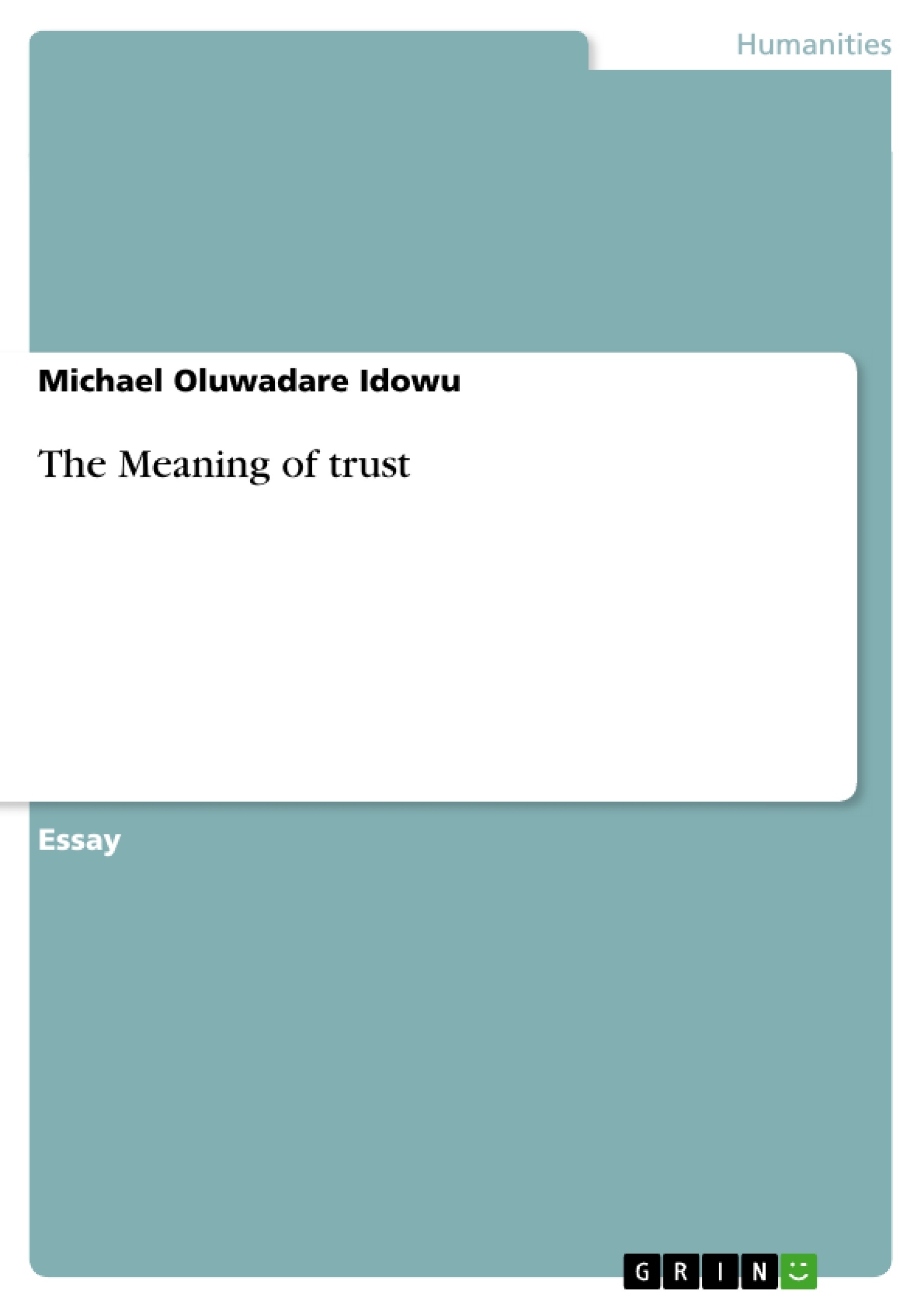The only ingredient that makes the world go round is trust. When it is lacking in a home, the home suffers and when it is absent in the community, it results into survival of the fittest with all the negative consequences for the society to deal with.
It is submitted that it is better to talk over it than to fight over it. Sometimes giving your path to the dog may be better than be bitten by the dog.
Inhaltsverzeichnis (Table of Contents)
- TRUST
- IMPORTANCE
- Bonding
- Creativity and Ingenuity
- Retention
- Motivation
- TRUST AND CONTROL
- LEADERSHIP THAT DEVELOPS TRUST
- REGAINING TRUST
- TRUST IN THE COMMUNITY
- CONCLUSIONS
Zielsetzung und Themenschwerpunkte (Objectives and Key Themes)
This text explores the concept of trust in the workplace and its significance for organizational success. It examines the benefits of fostering a culture of trust, explores the relationship between trust and control, and analyzes different leadership styles and their impact on trust. The text also delves into the importance of regaining trust when it has been lost and the role of trust in building a strong and cohesive community.
- The importance of trust in the workplace
- The benefits of trust for employee motivation and productivity
- The relationship between trust and control
- Leadership styles and their impact on trust
- The process of regaining trust
Zusammenfassung der Kapitel (Chapter Summaries)
The initial chapter defines trust as a crucial element in the management of individuals and resources within a workplace. It asserts that trust is the ability of the employer to act according to agreed-upon rules and to reward employees fairly. The chapter emphasizes the importance of transparency, honesty, and clear expectations in building trust.
The second chapter delves into the benefits of trust in the workplace, highlighting its impact on bonding, creativity, employee retention, and motivation. Examples are provided to illustrate how trust can foster loyalty and encourage employees to perform at their best.
The third chapter discusses the relationship between trust and control. It argues that trust and control should align within organizations and that the setting of realistic and challenging targets is essential for achieving optimal performance. The chapter emphasizes the importance of transparency and keeping promises to build trust and maintain a positive working environment.
The fourth chapter explores leadership styles and their impact on trust, focusing on Theory X and Theory Y. Theory X perceives employees as inherently lazy and requiring constant monitoring, while Theory Y views employees as naturally motivated and capable of independent work. The chapter advocates for a Theory Y approach that fosters trust through delegation, open communication, and empowerment.
The fifth chapter addresses the process of regaining trust after it has been lost. It highlights the importance of a paradigm shift, genuine apologies, and open communication in restoring trust. The chapter emphasizes the need for parties involved to identify the root causes of trust breakdown and to work collaboratively to find acceptable solutions.
The final chapter explores the importance of trust in the community. It uses the example of Nigeria's political climate to illustrate how a lack of trust can erode social cohesion and hinder progress. The chapter concludes that trust is a vital component of a healthy society and that it is essential to address issues of mistrust through open dialogue and genuine efforts to build understanding.
Schlüsselwörter (Keywords)
The key concepts explored in this text include trust in the workplace, employee motivation, leadership styles, Theory X and Theory Y, control, regaining trust, and the importance of trust in building a strong and cohesive community.
- Quote paper
- Michael Oluwadare Idowu (Author), 2015, The Meaning of trust, Munich, GRIN Verlag, https://www.grin.com/document/288619




